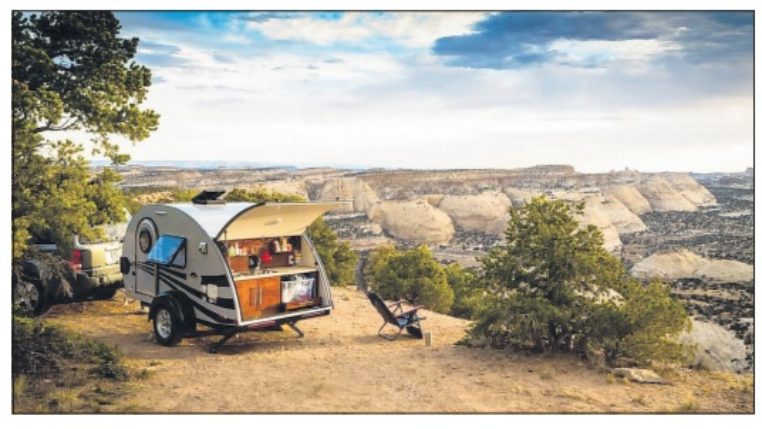RV Trends for 2020

For many, summer beckons the call to the open road. And recreational vehicles are an excellent way to travel in comfort and style for those who don’t truly wish to rough it. RVs come in many shapes and styles, and each year brings new trends and innovations in the industry to meet customer expectations. The RV Family Travel Atlas identified four new trends for 2020 influencing the RV industry.
Back To Basics
Bigger is not always necessarily better. Some find larger RVs and trailers intimidating to drive or tow and the upkeep can be expensive, not to mention the price of purchase. Like the tiny homes movement and the smaller camping trailers of decades past, RV makers are responding to travelers who desire something smaller and simpler, emphasizing quality over quantity. A range of new models are now coming onto the market that are under 30 feet long, but still offer many amenities of a larger RV.
Towing Communication
So you’ve decided on a new RV, but you’ll need to tow it. According to RVFTA, figuring out the right kind of vehicle to haul your RV can be confusing and take much of the fun out of the experience. Thankfully, communication between truck manufacturers and RV makers have increased to make the hitch-tow capacity equation easier on buyers. In the meantime, RVFTA offers a helpful video on their website to assist at rvfta.com.
Focus On Quality
Not all RVs are designed to be driven. In fact, many find the same experience in a trailer-style RV at a cheaper price. But just because you don’t have to drive the RV itself doesn’t mean there aren’t maintenance issues. Among these are the rigs themselves. In years past, RVFTA cites a flood of RVs aimed at budget-priced consumers but which also come with budget-priced craftsmanship. In essence, you get what you pay for, and a cheaper rig will likely mean more costs down the road. If you’re in the market, make sure you invest in a quality rig. It may cost more up front, but you’ll be thankful later on.
Fiberglass Revolution
For years, the RV industry has been dominated by wood and tin models. Fiberglass always offered a budget alternative, but found only niche markets. That’s changing. Upscale RV makers such as Airstream are marketing fiberglass trailers such as its Nest, which has been met with consumer praise. Because manufacturers are investing in a quality RV built from fiberglass, buyers have responded to a quality fiberglass RV that lands between the budget models and the higher-priced models made of traditional materials.

